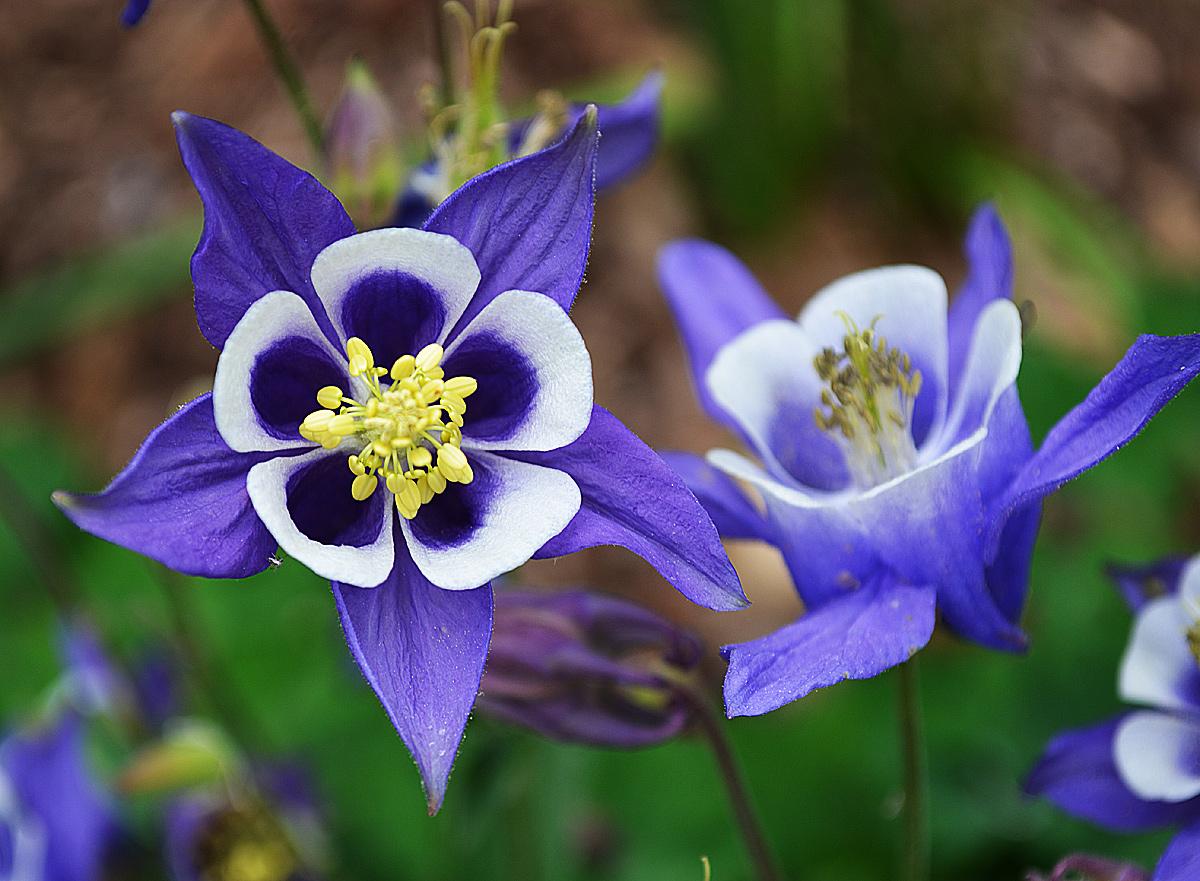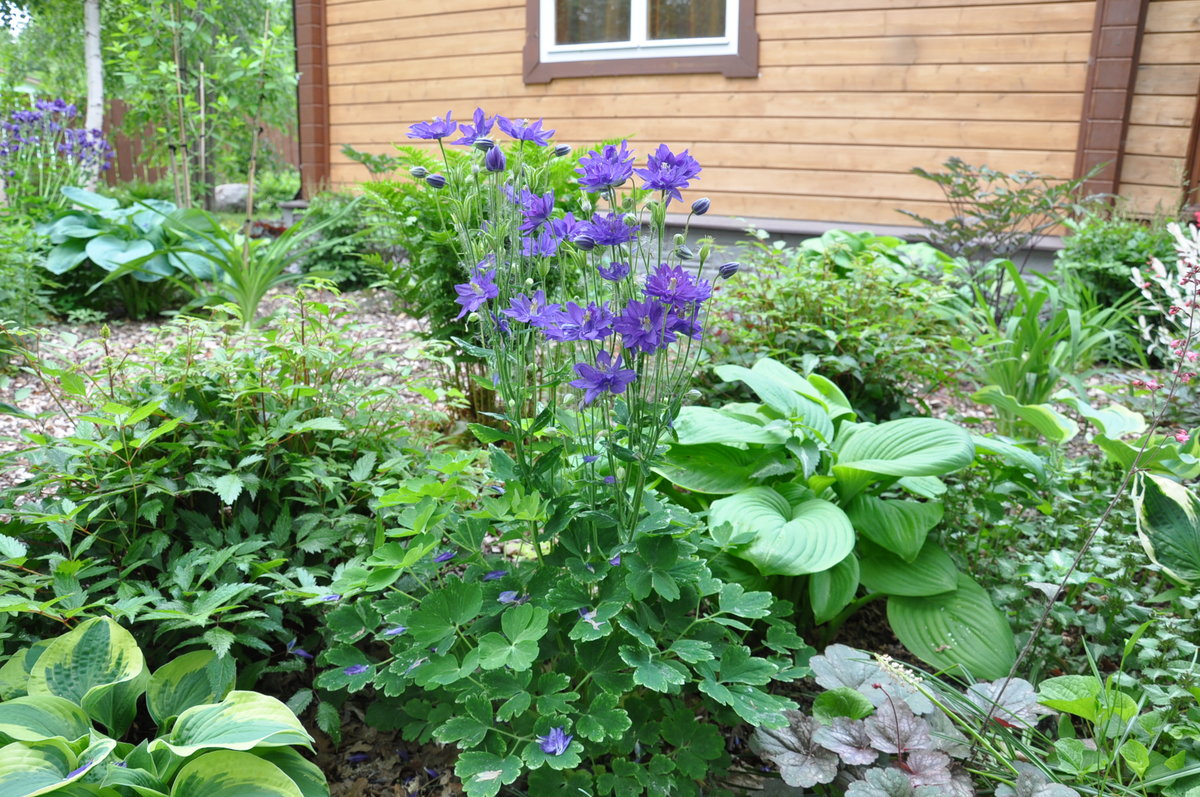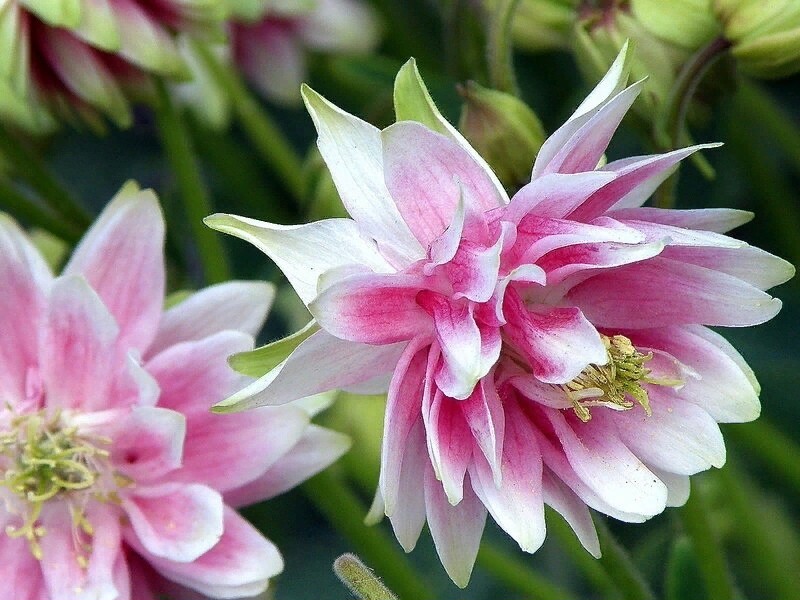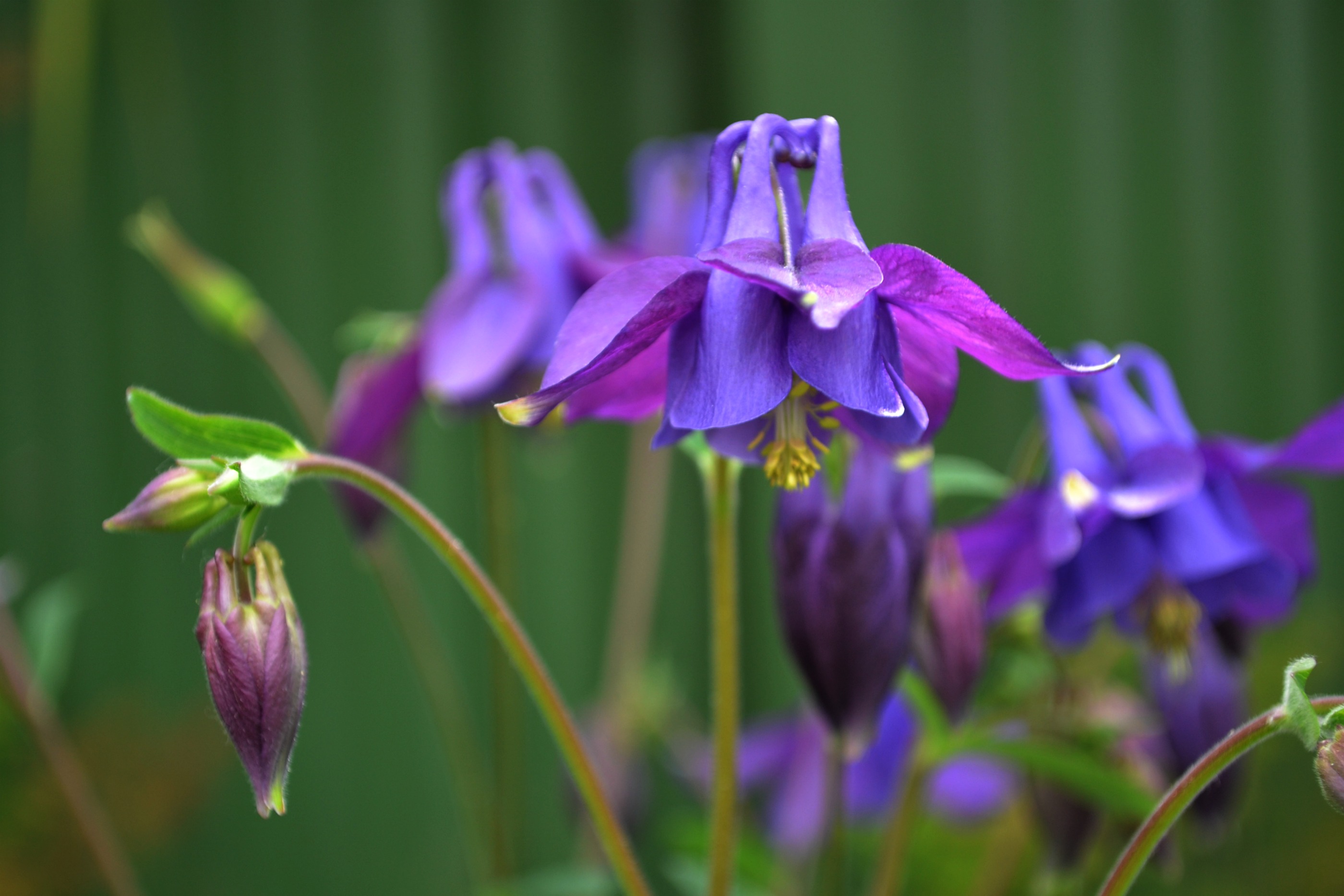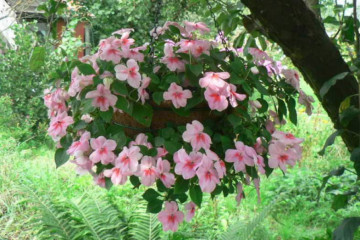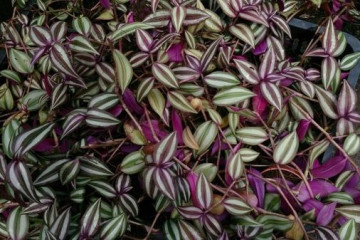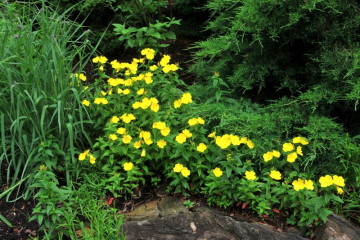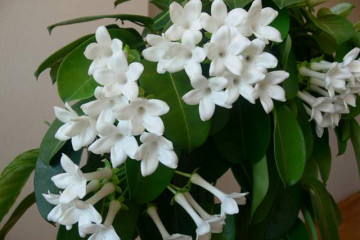Aquilegia flower
Content:
Aquilegia is a flower popularly called an elf's shoe, catchment, eagle or dove, is often mentioned in myths and fairy tales. Such unusual names were assigned to the plant due to the originality of the flower shape. Really unusual, unlike anything aquilegia flowers will adorn the gardens located in the northern hemisphere. In other parts of the world, decorative hybrid varieties are used for landscape design.
Aquilegia is most often called a catchment, it is a herbaceous perennial from the buttercup family. The main habitat is in the mountainous regions of the northern regions.
Description of the plant
The original perennial water collector flower, which has not been selected, is a short plant, reaching 30 cm during the growing season. But during flowering, under favorable weather conditions, it can grow up to 1 m up. Moreover, the stems can fall to the ground.
In most cases, the flower lives for 2 years. In the first year of its development, it forms a bud for a flowering shoot, which is discarded in early summer. By autumn, a small rosette of leaves forms, dying off and overwintering. In the second year, last year's leaves are replaced with new ones.
Single flowering - one drooping flower is formed on a flexible flowering stem. The description of the plant will be incomplete without mentioning that the petals of an alpine flower can have a variety of colors - white, red, yellow, crimson, blue, as well as a combination of several colors.
Corolla is 5 petals, separated from each other. They form a kind of funnel, in which a wide hole is cut obliquely. It is noteworthy that in addition to the main petals, the flower has spurs. They are longer and narrower, bent towards the stem.
Some aquilegia varieties form panicles from flowers, as opposed to a single flowering plant growing in the wild.
After flowering, the fruit of the aquilegia is formed. It is a multileaf (leguminous fruit) with black shiny seeds.
Aquilegia: planting and care in the open field
It must be borne in mind that ordinary aquilegia blooms for 2 years. Flowers are thrown intensively between early June and early August.
Aquilegia has become quite often used when decorating flower beds and lawns. If you choose the right height of the plant, you can decorate it with landscape alpine slides. It is most suitable for mixing with other plants. After all, its natural distribution area is mountainous regions. Therefore, you just need to pay attention to the companion plants - and the result can surprise and delight even the most demanding aesthetes.
Tall plants tend to look best when planted in a heap in one place. You should not plant aquilegia in a row, since tall representatives of this genus can simply fill up flower stalks from strong winds or heavy rainfall.
The main thing is to choose the right variety and then flowers of a certain color, shape and size will be able to decorate any flower bed. Including you need to pay attention to the height of the peduncle, so that it does not drown out its neighbors and does not get lost among them.
How long does aquilegia bloom
Under favorable conditions, the right amount of sunlight, the right level of humidity, this plant is able to delight the eye with its delicate and sophisticated flowers almost throughout the summer.
If you want aquilegia to give intense flowering, then you should take care of planting and care in the open field according to the following rules:
- it is better to choose partial shade. Otherwise, in highly illuminated areas, the flowers will be smaller in size, and the flowering period may decrease to 1 month;
- the soil should be moderately moist. To do this, water the plants as the topsoil dries. It is also worth taking care of timely loosening - this will ensure the necessary flow of oxygen into the soil. In order for the soil to become light, as aquilegia loves, it is necessary to add humus to it. Fertilizing is carried out with standard mineral additives suitable for flowering plants.
Aquilegia varieties
Today, aquilegia has more than 100 varieties bred by breeders from different countries. This allows you to choose a flower for any need in the formation of original landscape garden variations and flower beds.
Aquilegia Terry
Aquilegia Terry is an unusual plant variety, which is distinguished by the largest flowers, reaching a diameter of 10 cm. It was artificially bred in order to diversify flowers and achieve a certain effect.
A distinctive feature is the multi-petal structure. The flower itself is formed from narrow petals arranged in several rows. In terms of coloration, the intensity of the color decreases as it approaches the center. Shades can range from white to lilac.
There is a specific bluish bloom on the leaves of this plant.
This is what ensured the great popularity of the variety among gardeners.
Aquilegia Hybrid
The name itself indicates that breeders have worked hard to improve both the shape and size of the flower, and the versatility of its color. Breeders managed to achieve such results by crossing the catchment area of the Alpine and American varieties of the plant.
Aquilegia hybrid is tall - shoots can reach 1 m in height. And the flowers themselves are quite large - up to 10 cm in diameter. If we talk about the number of flower petals of this variety, then they can be standard - 5 main and 5 spurs. In other variations of the variety, the number of petals can be much larger and form a double or fan-shaped flower.
The most common color options are a combination of white with blue or red. Monochromatic coloration of the peduncle is also common.
Also, this variety is suitable for growing in more northern regions than it usually grows - it is quite frost-hardy and unpretentious to care for.
Aquilegia Ordinary
The habitual area of distribution of this flower falls on the European part of the Eurasian continent.
It differs in height, ranging from 30 to 70 cm - depending on the conditions that exist in a particular region or season.
The main part of the leaves of the variety are located at the base of the petiole and much less often leaves are found along the length of the stem. They are double trifoliate, with a slight bluish bloom.
If we talk about the size of the peduncle, then it is quite average in size. Only 4, maximum 5 cm in diameter. As for the number of petals, they can be standard and include 5 main and 5 spurs. In other variations, there are double flowers.
It is all of the above characteristics of this aquilegia variety that make growing and caring for it quite easy.
Aquilegia Winky
It is most often used to decorate a garden in landscape design, for interiors (as balcony flowers) or as a potted flower.
A distinctive feature of the Winky aquilegia is a fairly compact bush, reaching a height of no more than 20-30 cm.
At the end of the stem, 20 cm long, there is one flower, which is most often a double combination of petals, complemented by spurs. Coloring varies from monochromatic petal options to a combination of several shades.
Such an aquilegia at the dacha allows you to effectively decorate not only the flower beds, but also the facade of the building, since the designers suggest planting it in hanging pots.
Aquilegia Yellow
Another perennial hybrid of the plant is the Aquilegia Yellow variety. Its distinctive feature is the golden flowers of a uniform color, which have a fairly standard shape inherent in the wild-growing catchment.
This species is popular in North America, but, recently, it is becoming more and more in demand among domestic gardeners. This is due to the fact that bright flowers of a rich yellow hue begin to bloom early enough and continue to throw out peduncles abundantly throughout the summer.
As for the growing regions, it feels best in regions with a temperate continental climate.
Aquilegia Columbina
This is a perennial with a compact, but rather tall bush - up to about 70 cm. The variety is cold-resistant, which makes it, like Aquilegia Usual, suitable species for growing in Siberian regions.
A distinctive feature of the Columbine aquilegia is a more elongated flower shape, reminiscent of a bell-shaped bowl. Petals can range from the lightest (whites) to deep deep purples.
Aquilegia White
White varieties of the catchment area look quite impressive. They can become a real decoration of the garden, especially in combination with other flowers of a brighter color.
There are several varieties of White Aquilegia, such as "Snow Queen", "Tower white", "White Star".
If we talk in general about how to care for this type of aquilegia, then it is as unpretentious as everyone else. The main thing is to choose the right time to sow seeds or plant seedlings. And also provide suitable conditions for moisture and soil quality
Aquilegia Alpine
Variety Aquilegia Alpine is a small plant. In height, it rarely reaches more than 40 cm.However, if you artificially create the most comfortable conditions for growth and make regular feeding, you can drive out peduncles up to 80 cm high.However, most often the plant is rather stunted.
The peak flowering of this variety occurs in early June, late July. The flower is ordinary in shape. The conditions are unpretentious.
But still, aquilegia will require specific care after flowering. In order to rejuvenate the bush, it must be transplanted before it is 2 years old. Otherwise, you can damage the root system of the flower. It is also important to rejuvenate the plant to maintain an attractive appearance. This can be done by cutting off the faded peduncle.
Summing up all of the above, it is worth noting that in landscape design, aquilegia Colombian, Biedermeier, Hybrid, Clementine and Makhrovaya are the most popular. They are ideal plants for mixborders and alpine lawns. Due to their unpretentiousness, they easily take root, do not require intensive care and frequent feeding. But, nevertheless, it is desirable that the plant be provided with partial shade - this is how the flowers achieve the most attractive appearance and large size. In this case, it turns out to achieve also a longer flowering.
